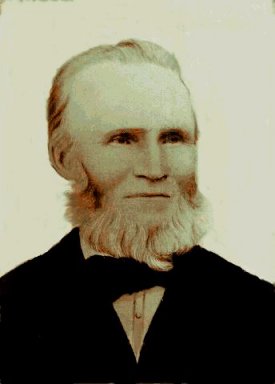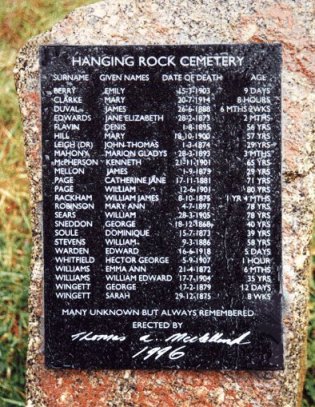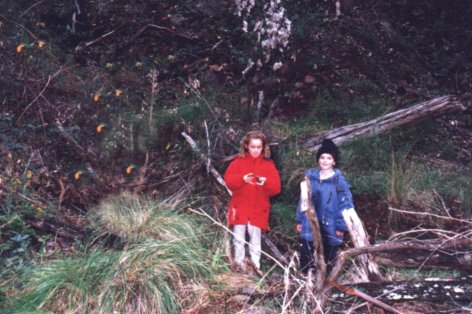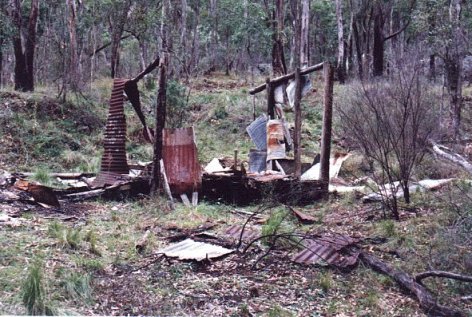 |
||||||
(This is a summary of James Sneddon evolved from family stories and combined with my own research. Much is conjecture, but the basis is found on fact.)
James Sneddon was born in Polmont, Stirling, Scotland, and christened on 23 May, 1830, the third son of Alexander Sneddon and Mary Bennie (believed married 30 June, 1826, at Muiravonside, Stirling, Scotland). He died in Tamworth, NSW, 8 January, 1911. Other children of Alexander and Mary were: James (b. 12 July 1827, Polmont; died Aug 1827), George (b. 4 december 1828, Polmont), William (c. 30 December 1832, Polmont), Jane Wyper (c. about 1834, County Lanark), and Alexander (c. about 1836, Edinburgh, Scotland). James, with his brothers William and George, arrived in Australia aboard "The Helena" in 1854. From here on part of their story can only be conjecture from family stories heard in part over the years by various members of the family. A number of stories circulated among the families; one being that they were marines who jumped ship to go in search of gold, and upon striking a rich vein, returned and bought their release. However, records show that they arrived as passengers aboard "The Helena" . It is then believed that they worked on the roads. As most road work was done by convicts, it is possible that they were hired to help keep things under control and absconded from this position to seek their fortune in the hills around Nundle, New South Wales. Supporting this theory is the fact that they changed their name to Foley, and it was under this pseudonym that they made their first strike. This mine was called "Foley’s Folly" . It is possible that they then returned to buy their lawful release from whomever they had worked, for they then reverted to their own name of Sneddon. How long they worked "Foley’s Foley" is hard to say, but the next mine was called the "Lady Mary", named after James Sneddon’s wife, Mary (to whom he always referred to as Lady Mary). James married Mary Coulton on 30 December, 1862, at Tamworth, NSW. From this it can be concluded that the "Lady Mary" was not opened until after this time.
A visit to the Nundle area, today known tourist-wise as "The Hills of Gold", shows the huge difficulties under which our forebears laboured. It also led me to the grave site of George Sneddon at the old Hanging Rock Cemetery. Further research shows he committed suicide on 18th December 1868. Commemorative plaques have been fixed to several large rocks by a local historian, Thomas McClelland, listing all those known to be buried there. (See photo) James made his home at "Burnhead" farm on the Manilla Road, just out of Tamworth. James and Mary had 13 children: Mary Ann (1864), George (1866), William (1867), James (1869-1869), James (1870), Elizabeth (1873), John (1875), Isaac (1876), Richard (1878), Alfred (1879), Thomas (1881-1883), Alice Harriet (1882) and Evaline (1884). Thomas died at the age of 2 years 5 weeks. Over the years I often heard the rumour that James had found a third reef of gold in the Nundle area but, not needing more money at the time, the "canny" Scot covered it up "for a rainy day", but died refusing to disclosing its whereabouts. I was always sceptical of this story until, in 1970, an old aunt, Charlotte Creanor (sister of Hannah Huldah Hewett, my great-grandmother) contacted my mother saying she knew the whereabouts of the hidden reef and would only disclose it to her. Unfortunately, by the time we arrived in Nundle she had become quite weak and her mind wandered too much to be able to pin-point anything. However, she did say she had sent samples away for testing and they sent back a report saying it was "fool's gold", a claim she refuted as rubbish: "I grew up with gold and know the difference between Fool's Gold and the Real Gold, and this was real gold". She died shortly afterwards. She did relate to us the whereabouts of the reef (I recorded the conversation) and I believe I could locate it without too much difficulty. However, when I checked, I found that the large conglomerates had leases covering the whole area. So, the mystery of the hidden reef, supposedly far richer than either of the previous mines, remains just that, a mystery. Certainly, no one appears to have ever stumbled on it. As I said, I know roughly where it is, but appears it may also go to the grave with me as I am not about to do the work for any large company. The Sneddons and their offspring were among the pioneers of the Northern Tablelands, including the first to successfully grow tobacco in the region. Local historians have asked about the name "Lady Mary". Les Sneddon, in typical Scots fashion, refused to tell them. “That’s our business!” he said, and went on to tell me that James held his wife in such high esteem that he always referred to her as "Lady Mary". Hence the name of the mine. |
||||||
|
||||||
|
||||||
. . |



